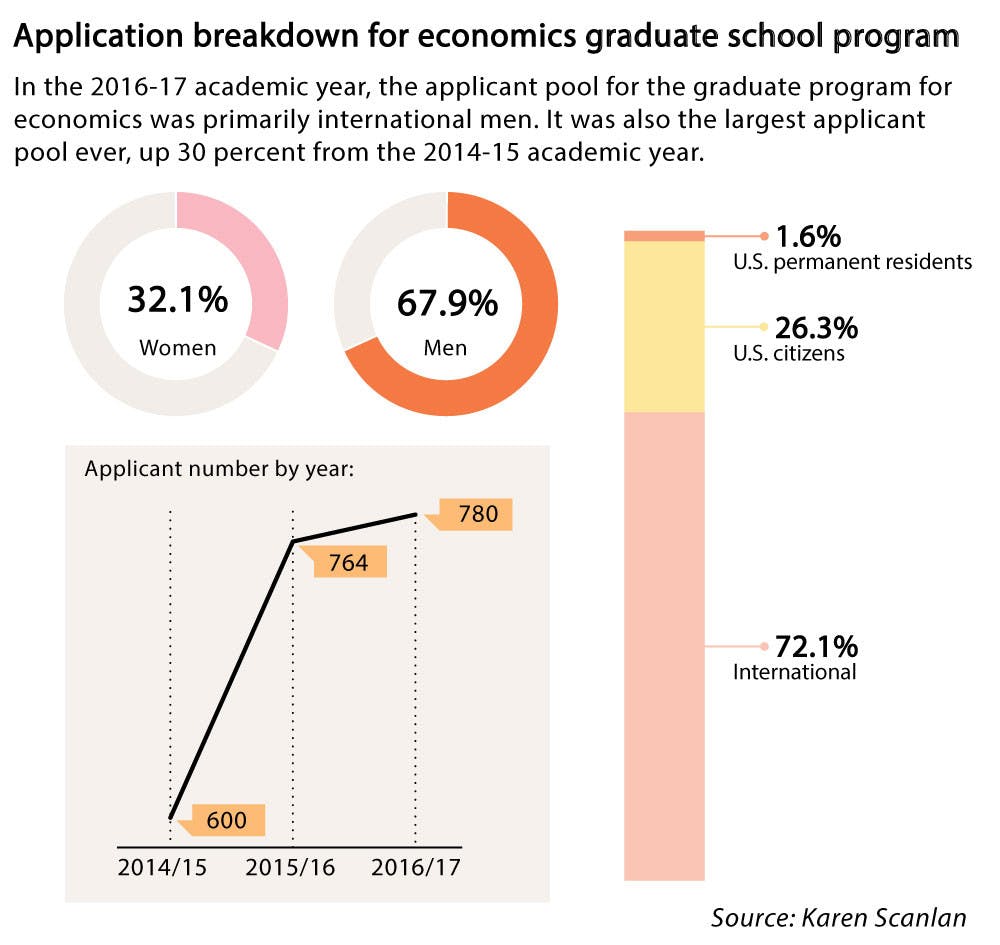As part of the University’s Diversity and Inclusion Action Plan, the Graduate School has begun to reshape its recruitment efforts with the hopes of doubling the number of graduate students from historically underrepresented groups by 2022.
Marlina Duncan, associate dean of diversity initiatives at the graduate school, and Liza Cariaga-Lo, vice president for academic development, diversity and inclusion, are actively working together “to foster holistic application review processes as a way of removing barriers to recruitment,” Duncan wrote in an email to The Herald.
In December, the Graduate School held a workshop on holistic application review for graduate programs in the life and physical sciences, and it will hold a similar workshop for the humanities and social sciences this month, Duncan wrote. Duncan also meets individually with academic departments to form recruitment plans that foster “a deeper understanding and acceptance of diversity and inclusion.”
The University will expand recruitment efforts through its Initiative to Maximize Student Development, an extension of the DIAP and pre-doctoral program designed to provide support for students in underrepresented groups pursuing PhDs in Biology and Health Sciences. Next year, the IMSD’s Preview Day, in which 35 prospective master’s and doctoral students primarily from HUGs in the life and physical sciences were invited to campus to visit academic departments, meet with graduate students and learn about the graduate application process, will expand to include students from other disciplines.
At this year’s Super Monday, a program that annually brings admitted doctoral students from HUGs to preview campus, “the Graduate School is partnering with the Faculty of Color Network to host a Super Monday dinner and panel discussion on thriving at graduate school,” Duncan wrote.
Students from HUGs may apply to an IMSD program that funds their second and third years of graduate school, wrote Aislinn Rowan, graduate student council president and a third-year PhD student in the graduate program for pathobiology, in an email to The Herald.
The School of Public Health has also instituted a plan to recruit a more diverse applicant pool. The SPH received a record 762 applications to its graduate programs as of January compared to 719 applications in last year’s admission cycle, wrote Karen Scanlan, director of communications at the School of Public Health, in an email to The Herald.
In an effort to attract a diverse pool for the School’s doctoral and master’s programs, SPH held several virtual recruitment fairs to reach a broader national and international audience. The school also sent a student and faculty member from the SPH to the Morehouse College Public Health Sciences Institute Graduate Recruitment Fair in June, Scanlan wrote.
The SPH also partakes in the IMSD, which connects undergraduate from HUGs at institutions like St. John’s University in New York and North Carolina Agricultural and Technical State University to Brown graduate programs in Biology and Medicine and Health. As another recruitment effort, the SPH actively participates in the institutional partnership between Brown and Tougaloo by offering Tougaloo sophomores an opportunity for early admission to Brown’s Master of Public Health degree program, Scanlan wrote.
In the 2015-16 cycle, 19 percent of the SPH applicant pool self-identified as students of color, Scanlan wrote.
Graduate programs in the economics department have aimed to increase the number of women and students of color as part of its departmental DIAP, Professor Oded Galor wrote in an email to The Herald.
As of January,the department has received a record number of 780 applications. Of the current applicant pool, 32.1 percent identify as female and 67.9 percent as male. Out of the 26.3 percent that are U.S. citizens, 24.7 percent self-identify as Asian, 4.8 percent as African American and 0.9 percent as Native American.
The department uses its visiting day as its primary recruitment effort.
As this is the first year since the departmental DIAP was instituted, both Aislinn and Duncan noted that it will be difficult to speak about how the plan has impacted graduate applicant pools and admissions until the April 15 deadline for decisions.





